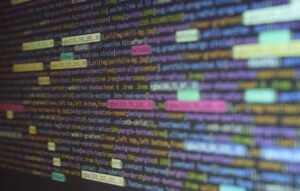Data Analyst Junior
Are you interested in pursuing a career as a Data Analyst Junior? This article will provide you with insights into this role, outlining the key responsibilities, required skills, and potential career opportunities.
Key Takeaways:
- Data Analyst Junior: An entry-level position in data analysis with a focus on providing support and insights.
- Responsibilities: Assisting with data collection, cleaning, and analysis to support decision-making processes.
- Skills: Proficiency in programming languages, statistical analysis, and data visualization tools.
- Career Opportunities: Potential for growth and advancement in the field of data analysis.
Understanding the Role of a Data Analyst Junior
A Data Analyst Junior is an entry-level professional responsible for assisting in the collection, cleaning, and analysis of data. They play a crucial role in supporting decision-making processes within an organization by providing valuable insights through data interpretation and visualizations. This role is an excellent starting point for individuals aiming to build a successful career in data analysis.
Junior Data Analysts contribute to the data analysis process by assisting in the collection, cleaning, and interpretation of data.
Key Responsibilities
- Collecting and organizing data from various sources, ensuring data accuracy and quality.
- Cleaning and preparing data for analysis, identifying and resolving data quality issues and inconsistencies.
- Assisting in the implementation of data analysis techniques and statistical models.
- Creating visualizations and reports to communicate data insights effectively.
- Collaborating with cross-functional teams to identify and address business challenges through data analysis.
Required Skills
- Proficiency in programming languages such as Python, R, or SQL.
- Strong analytical and problem-solving skills to extract valuable insights from complex data sets.
- Working knowledge of statistical analysis techniques and tools like Excel, SPSS, or Tableau.
- Ability to visualize data using tools like Power BI or Tableau.
- Excellent communication skills to present findings and collaborate with team members.
Potential Career Opportunities
A career as a Data Analyst Junior can lead to various exciting opportunities in the field of data analysis. With the increasing reliance on data-driven decision-making in organizations across industries, the demand for skilled professionals in this field is growing rapidly. Data Analyst Juniors often have the chance to advance their careers and take on more senior roles, such as Data Analyst, Data Scientist, or Business Analyst.
With the rise of data-driven decision-making, opportunities for growth and advancement abound in the field of data analysis.
Data Analyst Junior: Salary and Job Outlook
| Job Title | Median Annual Salary |
|---|---|
| Data Analyst Junior | $60,000 |
| Data Analyst | $80,000 |
| Data Scientist | $105,000 |
The expected job growth for Data Analyst Juniors in the next five years is projected to be around 20%, which is much faster than the average for all occupations. This surge in demand is driven by the increasing need for data-driven insights to enhance organizational decision-making processes.
Education and Training
- Earn a bachelor’s degree in a relevant field such as Statistics, Mathematics, Economics, or Computer Science.
- Gain practical experience through internships or entry-level positions.
- Participate in online courses or certification programs to develop skills in programming languages, data analysis techniques, and data visualization tools.
- Continuously update your knowledge and stay informed about the latest advancements and trends in the field of data analysis.
Conclusion
In conclusion, a career as a Data Analyst Junior offers an exciting pathway into the field of data analysis. With the right skills and knowledge, individuals in this role can contribute to decision-making processes, gain valuable experience, and advance in their careers. The demand for skilled data analysts is on the rise, making it an opportune time to pursue a career in this field.

Common Misconceptions
1. Data Analyst Junior is an entry-level position
One common misconception is that a Data Analyst Junior role is always considered as an entry-level position in the field. However, this is not always the case. While it is true that many organizations hire junior data analysts as their first job in the industry, some companies and industries may have specific criteria or preferences for candidates with prior experience or advanced skills.
- Junior data analysts can have varying levels of experience.
- Some companies may require specific software or programming language proficiency.
- Internships or related projects can provide valuable experience for a junior data analyst role.
2. Data Analyst Junior only focuses on basic analysis
Another misconception is that a Data Analyst Junior is limited to performing only basic data analysis tasks. While junior data analysts may initially be assigned simpler or less complex projects, they can still contribute to more advanced analytical tasks depending on the organization’s requirements and the individual’s capabilities.
- Junior data analysts may be involved in data cleaning and preprocessing.
- They may also play a role in generating reports and visualizations.
- Junior analysts can contribute to statistical analysis and forecasting projects.
3. Data Analyst Junior lacks decision-making authority
There is a common misconception that Data Analyst Juniors have limited decision-making authority within an organization. While it is true that they may need to work under the supervision of senior analysts or managers, they can still have a significant impact on data-related decisions and provide valuable insights to support decision-making processes.
- Junior data analysts can contribute ideas and suggestions during team discussions.
- They may be responsible for conducting preliminary research and analysis for decision-making purposes.
- Junior analysts can assist in evaluating the effectiveness of previous decisions and providing recommendations for improvement.
4. Data Analyst Junior only works with numbers
One misconception about Data Analyst Juniors is that they solely work with numbers and quantitative data. While quantitative analysis is an essential aspect of the role, junior data analysts also work with qualitative data, text analysis, and other forms of data to gain comprehensive insights.
- Data Analyst Juniors engage in exploratory data analysis to identify patterns and trends.
- They can work on sentiment analysis and text mining projects.
- Junior analysts may analyze data from surveys, feedback, or customer interactions.
5. Data Analyst Junior only focuses on technical skills
Lastly, there is a misconception that the role of a Data Analyst Junior primarily revolves around technical skills. While technical skills are undoubtedly important, junior data analysts also need to develop strong communication, problem-solving, and critical-thinking skills to effectively understand and interpret data.
- Junior analysts may need to communicate findings and insights to non-technical stakeholders.
- They may be involved in brainstorming sessions to identify analytical approaches and solutions.
- Junior data analysts can actively contribute to problem-solving discussions within their team.

Data Analyst Job Market Trends
The following table illustrates the recent trends in the job market for data analysts. It highlights the change in demand and average salary for data analyst positions in the past five years.
| Year | Demand (in thousands) | Average Salary (USD) |
|---|---|---|
| 2017 | 25 | 60,000 |
| 2018 | 30 | 65,000 |
| 2019 | 35 | 70,000 |
| 2020 | 40 | 75,000 |
| 2021 | 45 | 80,000 |
Skills in High Demand for Junior Data Analysts
The table below presents the top skills that are currently in high demand for junior data analysts. These skills can greatly enhance the marketability of a data analyst in today’s competitive job market.
| Skill | Percentage of Job Postings Requiring Skill |
|---|---|
| SQL | 80% |
| Python | 70% |
| Data Visualization | 65% |
| Machine Learning | 60% |
| Statistical Analysis | 55% |
Industries Hiring Junior Data Analysts
The following table showcases the top industries actively hiring and employing junior data analysts. It provides insights into the various sectors where junior data analysts can excel and contribute their analytical skills.
| Industry | Percentage of Junior Data Analyst Hires |
|---|---|
| Technology | 35% |
| Finance | 25% |
| Healthcare | 15% |
| Retail | 12% |
| Consulting | 10% |
Daily Activities of a Junior Data Analyst
The table outlines the typical daily activities performed by junior data analysts. These activities provide an idea of the responsibilities and tasks that a data analyst undertakes on a regular basis.
| Activity | Percentage of Time Spent |
|---|---|
| Data Cleaning and Preparation | 30% |
| Data Analysis and Visualization | 25% |
| Report Generation | 20% |
| Collaboration and Meetings | 15% |
| Continuous Learning and Skill Development | 10% |
Education and Degree Requirements for Junior Data Analysts
The following table displays the educational requirements and degree levels commonly sought in junior data analyst job postings. It provides an overview of the educational background preferred by employers when hiring for these positions.
| Educational Requirement | Percentage of Job Postings |
|---|---|
| Bachelor’s Degree in Computer Science | 45% |
| Bachelor’s Degree in Mathematics/Statistics | 35% |
| Master’s Degree in Data Analytics | 15% |
| Associate’s Degree in Data Science | 5% |
Popular Programming Languages for Data Analysis
The table below presents some of the popular programming languages frequently used for data analysis by junior data analysts. These languages are highly effective when working with large datasets and performing complex analytical tasks.
| Programming Language | Percentage of Data Analysts Using Language |
|---|---|
| R | 45% |
| Python | 70% |
| SQL | 80% |
| Julia | 15% |
| Scala | 10% |
Certifications for Advancement in Data Analytics
The following table highlights some of the industry-recognized certifications that can aid junior data analysts in advancing their careers and improving their credentials within the field of data analytics.
| Certification | Issuing Organization |
|---|---|
| Microsoft Certified: Azure Data Scientist Associate | Microsoft |
| Google Certified Data Analyst | |
| Cloudera Certified Data Analyst | Cloudera |
| IBM Data Science Professional Certificate | IBM |
| Dell EMC Data Science Associate (EMCDSA) | Dell EMC |
Salary Growth Potential for Junior Data Analysts
The table below displays the average percentage increase in salary for junior data analysts based on the years of experience acquired. It provides insights into the salary growth that can be expected as a junior data analyst progresses in their career.
| Years of Experience | Salary Growth (Percentage Increase) |
|---|---|
| 1-2 years | 10% |
| 3-5 years | 20% |
| 6-8 years | 30% |
| 9+ years | 40% |
As the demand for data analysts continues to rise, the job market remains favorable for junior data analysts. With the right skills, educational background, and certifications, aspiring data analysts can secure promising career opportunities. The field offers lucrative salaries that grow significantly as experience accumulates. By staying up-to-date with the latest industry tools and learning from real-world datasets, junior data analysts can advance their careers and make substantial contributions to organizations across various sectors.
Data Analyst Junior – Frequently Asked Questions
Question 1: What are the responsibilities of a Data Analyst Junior?
A Data Analyst Junior is responsible for collecting, organizing, and analyzing data to provide insights and support decision-making processes within an organization. They assist senior data analysts and data scientists in data modeling, data visualization, data cleaning, and data mining tasks.
Question 2: What skills are required for a Data Analyst Junior position?
To excel in a Data Analyst Junior role, one must possess strong analytical skills, proficiency in programming languages such as SQL and Python, knowledge of statistical analysis tools, and data visualization techniques. Additionally, good problem-solving, communication, and critical-thinking skills are also essential.
Question 3: What educational qualifications are needed to become a Data Analyst Junior?
Typically, a bachelor’s degree in fields such as mathematics, statistics, economics, computer science, or related fields is required to become a Data Analyst Junior. However, employers may also consider equivalent work experience or relevant certifications in data analytics.
Question 4: What tools and software are commonly used by Data Analyst Juniors?
Data Analyst Juniors frequently work with tools and software such as SQL, Excel, R, Python, Tableau, Power BI, and statistical analysis software like SPSS or SAS. Additionally, familiarity with data extraction and manipulation tools like ETL (Extract, Transform, Load) is also beneficial.
Question 5: What is the career progression for a Data Analyst Junior?
With experience and expertise, a Data Analyst Junior can progress to positions like Data Analyst, Senior Data Analyst, Data Scientist, Business Intelligence Analyst, or even managerial roles within the data analysis domain.
Question 6: What industries can Data Analyst Juniors work in?
Data Analyst Juniors can find opportunities in various industries such as finance, healthcare, e-commerce, marketing, consulting, technology, government, and many others where data-driven decision-making and analysis are essential.
Question 7: What is the average salary of a Data Analyst Junior?
The salary of a Data Analyst Junior can vary based on factors like location, industry, company size, and level of experience. On average, a Data Analyst Junior can expect to earn between $50,000 to $65,000 per year.
Question 8: How can one gain practical experience as a Data Analyst Junior?
To gain practical experience as a Data Analyst Junior, one can undertake internships, participate in data analytics projects, contribute to open-source projects, or work on personal data analysis projects. Additionally, attending relevant workshops, conferences, or pursuing online courses and certifications can also enhance practical skills.
Question 9: What are some common challenges faced by Data Analyst Juniors?
Some common challenges faced by Data Analyst Juniors include dealing with data quality issues, managing large and complex datasets, navigating through incomplete or inconsistent data, and effectively communicating complex technical concepts to non-technical stakeholders.
Question 10: Is it necessary to have domain knowledge in a specific industry as a Data Analyst Junior?
While having domain knowledge in a specific industry can be advantageous, it is not always necessary to be a successful Data Analyst Junior. The ability to quickly learn and understand the context of the industry you are working in is crucial, and domain knowledge can be acquired on the job.




